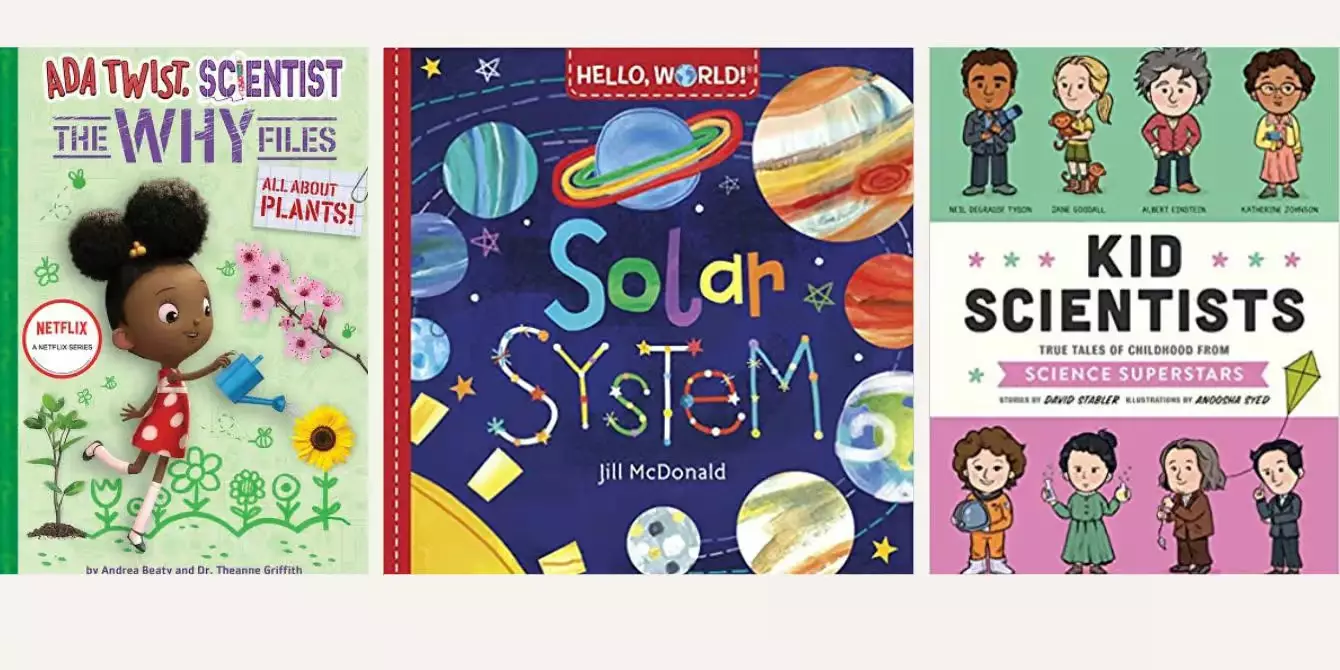The realm of childhood is enriched by an innate sense of wonder, where simple objects ignites profound curiosity. From toddlers marveling at a blade of grass to older children inquiring incessantly with “Why?”, the quest for knowledge is intertwined with their development. Nurturing this scientific spirit is essential, and what better way to do so than through engaging STEM (Science, Technology, Engineering, Mathematics) literature? Here, we explore an array of age-appropriate books that not only illuminate scientific concepts in relatable manners but also encourage both children and their caregivers to embark on a learning journey together.
Books have the potential to transform complex scientific principles into adventures, bridging the gap between abstract concepts and real-world understanding. For younger kids, engaging tales with relatable characters often serve as the captivating entry point into science. Take, for example, a book that follows a timid bat named Fiona who learns to navigate the darkness through her unique ability of echolocation. With a combination of a gentle narrative and actual activities that kids can try, it promises to make science accessible and fun, while educating about biosonar.
Even more visually striking are books that delve into the mesmerizing world of bioluminescent creatures, where charming illustrations guide young readers through the interplay of light in nature. These stories not only entertain but serve to pique interest in environmental science, demonstrating the wonders of life that thrive in the shadows.
The human body is a marvel in itself, and children are naturally intrigued by their own anatomy. A well-crafted anatomy book can serve as an engaging resource that not only educates about the skeletal system and organs but also does so using relatable, engaging language. Designed with layers of detailed illustrations, such books offer a comprehensive view that young explorers aged 7 to 10 would find captivating, all while providing an educational experience that even adults can appreciate.
Similarly, as seen through the lens of botanical themes, spin-off titles from popular stories, like “Ada Twist, Scientist,” bring elements of science into a scrapbook-like format ideal for early learners. Such formats cater to their imagination while hiding science lessons within relatable narratives, making them less daunting and far more engaging.
In a world where distraction is just a click away, captivating young readers can be challenging. Illustrated chapter book series, such as the adventures of young physicist Frank Einstein, integrate humor with fundamental science principles, ensuring that reluctant readers remain engaged. Through entertaining plots, these books demystify sometimes complex topics, allowing children aged 7 to 11 to delve into the world of physics while enjoying the narrative.
Additionally, the Kid Legends series takes an innovative and engaging approach to teaching young readers about the history of science. Instead of presenting a dry biography, it narrates pivotal moments from the childhoods of renowned scientists, engaging children and teaching them the value of curiosity and perseverance. This approach empowers children by connecting them with historical figures in a more personal manner.
Representation of contemporary issues within children’s literature has never been more critical, given that young audiences are navigating a pandemic. Texts explaining the science of viruses, vaccines, and preventative measures educate children on virology while allowing them to process their feelings about the ongoing health crisis. By blending fun illustrations with crucial information, these books are tailored for ages 8 to 12, equipping young readers with knowledge and understanding during confusing times.
In a similar vein, books geared toward older ages, such as “The Disappearing Spoon,” break down the complexity of chemistry into enthralling stories that include history and mythology to captivate the imagination. It proves that science can be as riveting as fiction when presented thoughtfully, further encouraging a genuine interest in the subject among young learners aged 10 and older.
Ultimately, the crucial takeaway is that fostering a love for science in children can ignite not just academic curiosity but also empower them with critical thinking skills necessary for navigating the complexities of life. The array of engaging STEM literature serves as a powerful resource that supports this endeavor. By encouraging our young explorers to ask questions and seek answers through reading, we are not only nurturing their intellect but also equipping them with the tools required for a lifetime of discovery.

